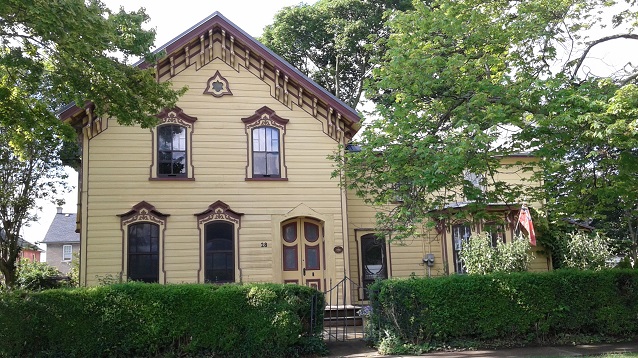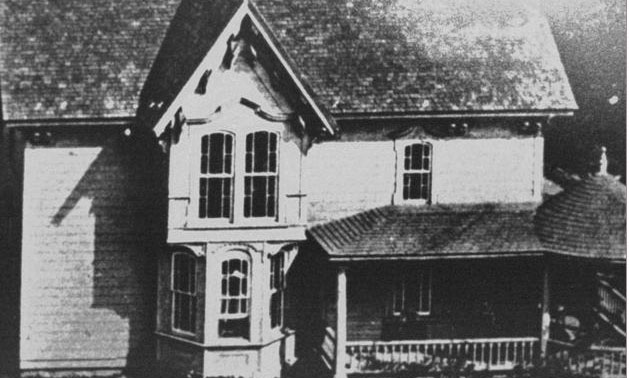Morwood House
Richard Morwood came to Welland in 1856 from the State of New York. The Morwood house was built over several years, with the east wing built last in 1864. It appears that the south façade of the plain west wing was added during the construction of the east wing to create a more unified exterior.
The west wing, dated to the late 1860s, is executed in a picturesque variant of the Italianate style. Its characteristics include the brackets under broadly projecting eaves, low pitched front and rear gables, shallowly arched windows, and the semi-elliptical, double front door with heavy moulding and etched glass.
Gothic elements are seen in the two-storey west bay with its steeply pitched gable and the carved decoration above the windows on all three façades. The unusual window arrangement of large central panes flanked by smaller side panes is drawn from the Classic Revival style. The front porch, which wraps around the west wing, visually unites the façades of both wings.
Its Queen Anne bandshell look marks it as being approximately twenty years younger than the rest of the house. The exterior surfaces are clapboard and shiplap siding. The interior woodwork of the original west wing includes hardwood flooring, paint-stained wood, and a circular staircase.
- 28-30 Young Street
- Built: 1861
- Designated: 1991
- By-law number: 1991-9775
Resources
Contact
- Heritage Advisory Committee
- Civic Square,
60 East Main St., Welland, ON L3B 3X4 - info@wellandheritage.ca

